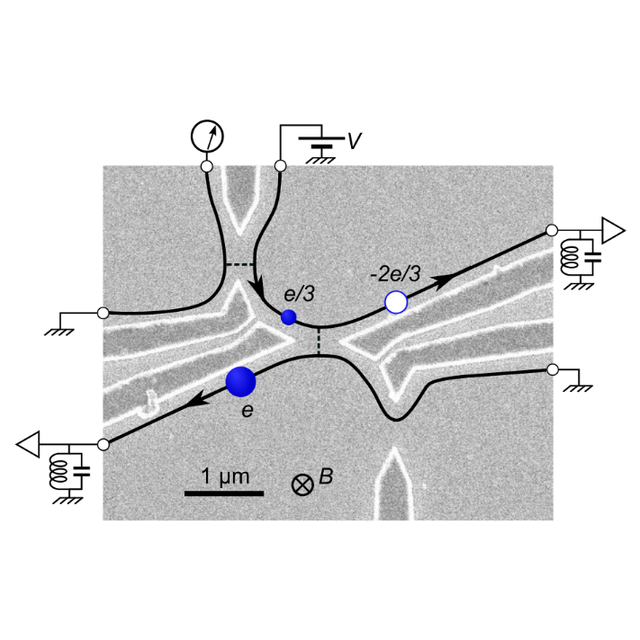The scattering of exotic quasiparticles may follow different rules than electrons. In the fractional quantum Hall regime, a quantum point contact (QPC) provides a source of quasiparticles with field effect selectable charges and statistics, which can be scattered on an ‘analyzer’ QPC to investigate these rules. Remarkably, for incident quasiparticles dissimilar to those naturally transmitted across the analyzer, electrical conduction conserves neither the nature nor the number of the quasiparticles. In contrast with standard elastic scattering, theory predicts the emergence of a mechanism akin to the Andreev reflection at a normal-superconductor interface. Here, we observe the predicted Andreev-like reflection of an e/3 quasiparticle into a − 2e/3 hole accompanied by the transmission of an e quasielectron. Combining shot noise and cross-correlation measurements, we independently determine the charge of the different particles and ascertain the coincidence of quasielectron and fractional hole. The present work advances our understanding on the unconventional behavior of fractional quasiparticles, with implications toward the generation of novel quasi-particles/holes and non-local entanglements.
References
Quasiparticle Andreev scattering in the ν = 1/3 fractional quantum Hall regime
P. Glidic1, O. Maillet1, C. Piquard1, A. Aassime1, A. Cavanna1, Y. Jin1, U. Gennser1, A. Anthore1,2 & F. Pierre1
Nature Communications volume 14, Article number: 514 (2023)
https://doi.org/10.1038/s41467-023-36080-4
Affiliations
1 Centre de nanosciences et de nanotechnologies - C2N (CNRS, Université Paris Saclay), Palaiseau
2 Centre de nanosciences et de nanotechnologies - C2N (CNRS, Université Paris Saclay, Université Paris Cité), Palaiseau
Contact : Frédéric Pierre
frederic.pierre@c2n.upsaclay.fr
Figure 1 : A quasiparticle of charge e/3 impinging on a QPC naturally transmitting charges e is converted into a transmitted quasielectron of charge e and a quasihole of charge -2e/3









